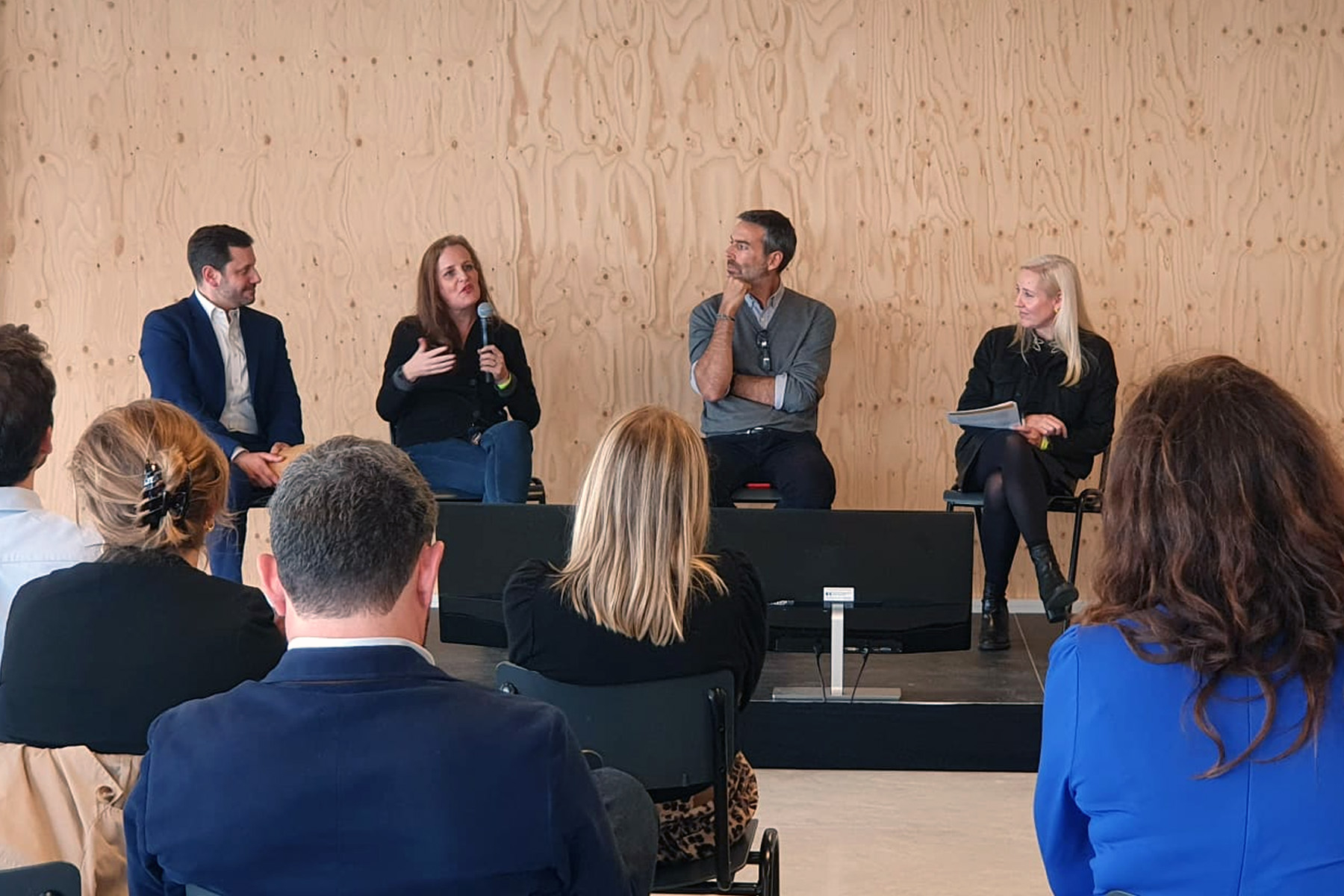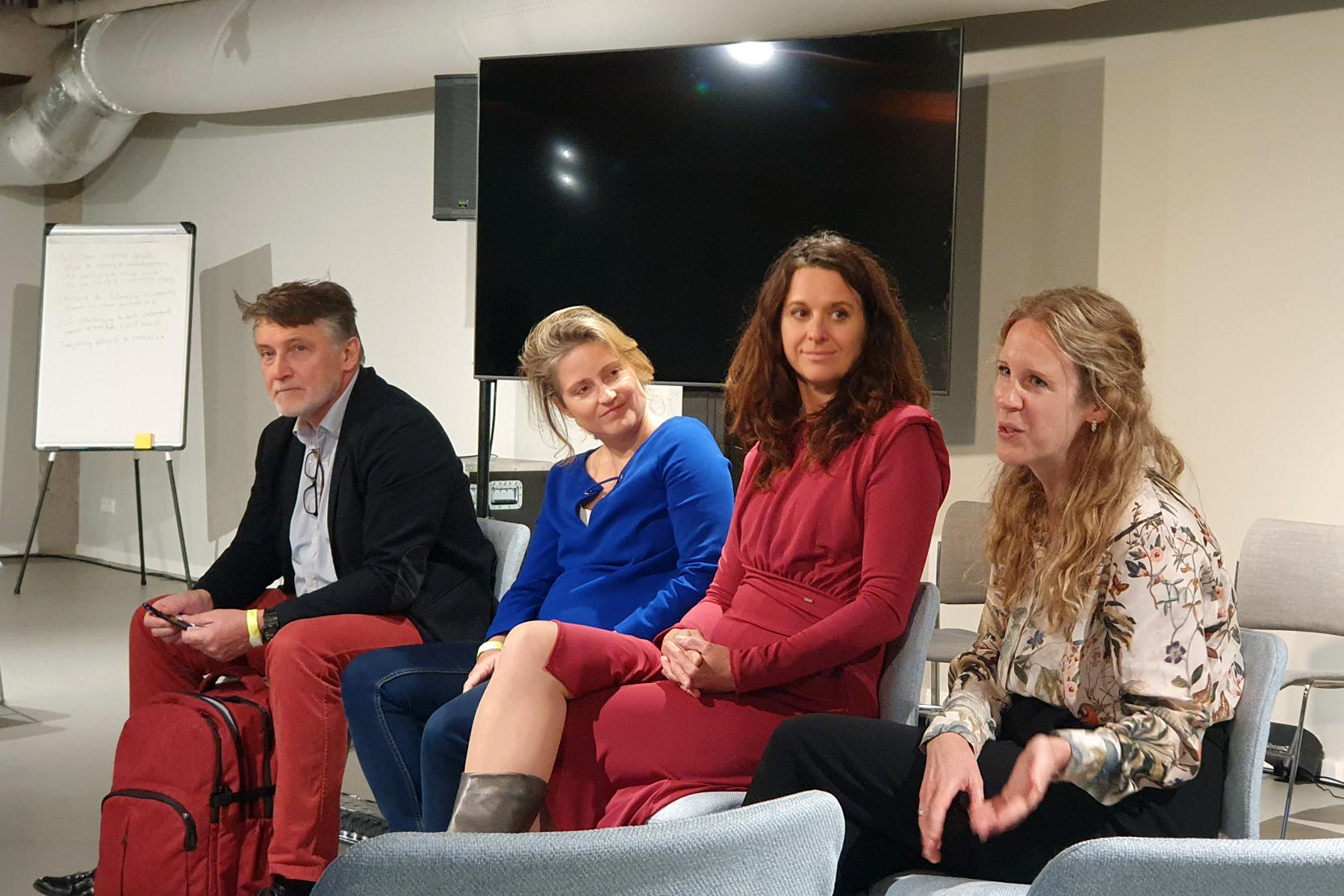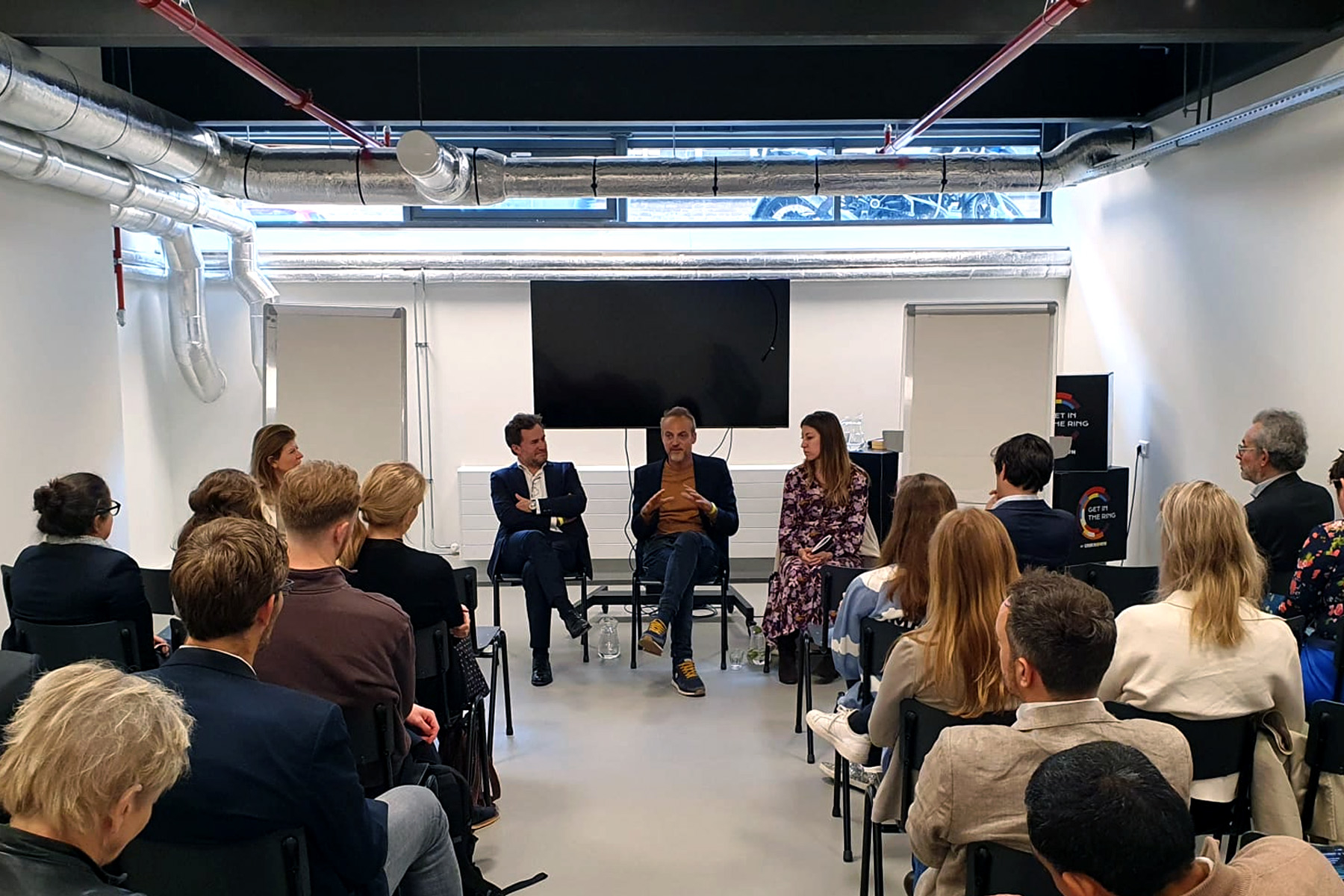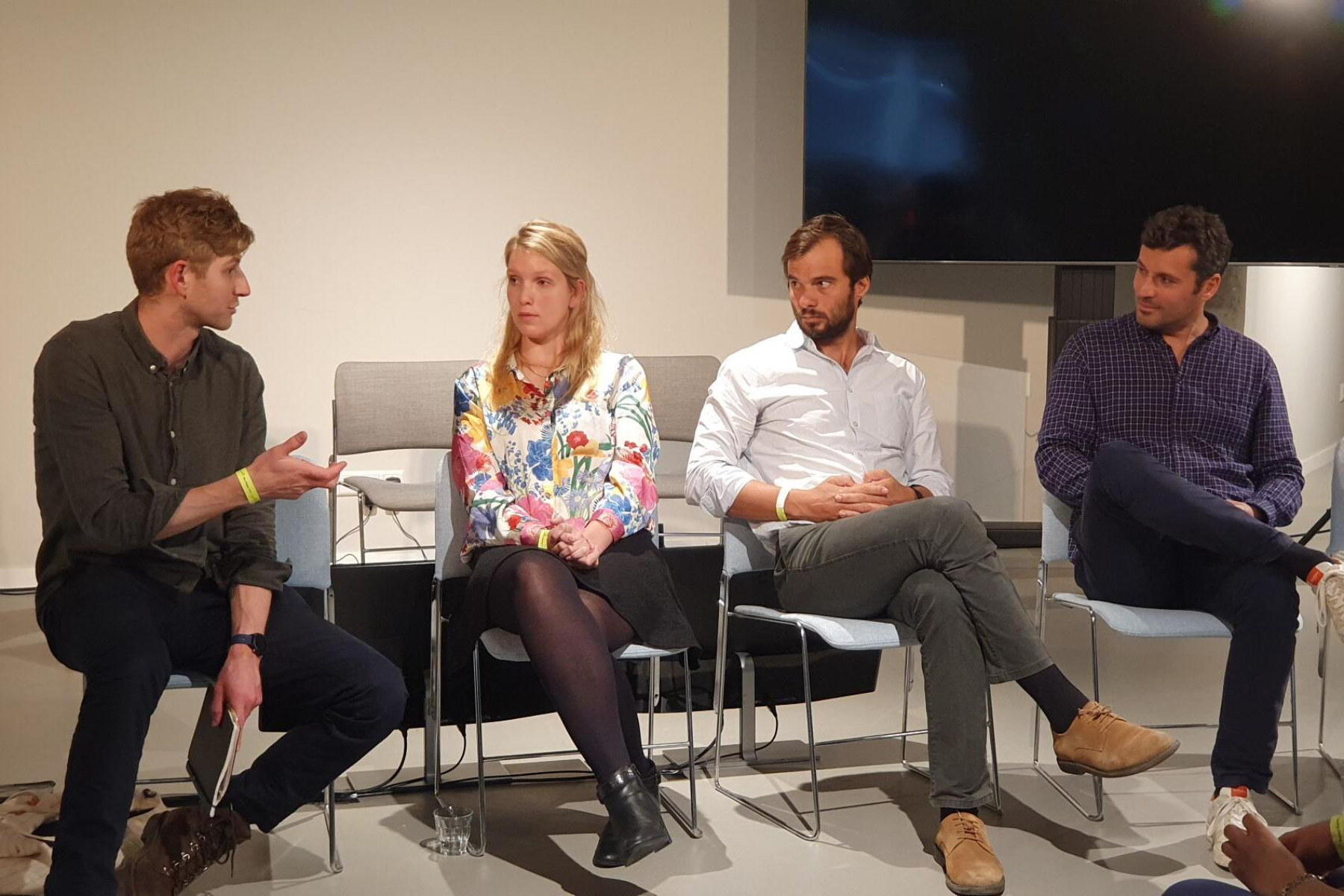From principle to practice
Putting social innovation to work in business
From our series Back to Business
Following 2023's Business of Impact in Venice, leaders of the event's breakthrough sessions share key takeaways and insights for the impact community.

It is interesting how quickly things can change. Working with social entrepreneurs was, until recently, a CSR project on the corporate sidelines. Today, the principle of forging partnerships with social innovators and entrepreneurs as a way to create business benefits, generate social value and foster inclusive growth is now fairly well established.
Forward-looking companies are increasingly active in collaborating with social businesses through innovative means, while the passage of forward-thinking laws and resolutions such as the EU’s Social Economy Action Plan, the African Union’s Ten Year Social & Solidarity Strategy and the UN’s resolution on the social and solidarity economy, are adding increasing dynamics to this shift. Other sustainability regulations such as the Corporate Sustainability Reporting Directive (CSRD) or various supply chain laws around the world are amplifying the business case for partnering with innovators who prioritise people, planet and society in their work.
The not so good news is, ask anybody who is working in this space and you will soon realise that the practice – actually implementing partnerships that successfully align a company’s purpose to its business goals – still has a bit of catching up to do. Despite a ready supply of corporate-ready ventures and significant interest – almost half of social enterprises surveyed by The European Social Enterprise Monitor expressed interest in working with corporate partners to increase their impact and financial sustainability – we have barely scratched the surface of what is possible.
At a recent session hosted by the EVPA and the World Economic Forum’s Global Alliance for Social Entrepreneurs, practitioners from both sides of the aisle – corporates looking to be more inclusive and sustainable and social entrepreneurs looking to partner with these organisations – explored some of the challenges in getting it right. Three things stood out.
1. We need to look beyond transactions to develop impact partnerships and ecosystems
Partnerships with social entrepreneurs can take many forms. Until recently, the vast majority of such engagements were either grant-making to social entrepreneurs as part of a company’s CSR activities, or accelerator programs that allowed social entrepreneurs to benefit from corporate expertise while corporate employees gained new insights into social innovation and found ways to use their skills to create positive impact.
Today, companies increasingly recognise the opportunities to engage in social innovation to address critical sustainability issues. Partnerships have evolved to include more embedded engagements, such as social procurement (the practice of buying products, materials or services from social entrepreneurs) and collaborations to develop new products, services and distribution networks that improve product access for hard-to-reach customer groups.
In addition to directly engaging with social entrepreneurs, leading companies recognise the benefit of supporting the enabling ecosystem around social entrepreneurs as a means to strengthen their own business ecosystem. “If big companies want their sourcing to be more inclusive and sustainable, they have to take an interest in what it will take to support sustainable and inclusive businesses,” says Yasmina Zaidman, Chief Development and Partnerships Officer at Acumen and one of the panellists at the EVPA workshop.
“It is difficult, and impractical, for a company to reshape its entire supply chain and still honour its mandate for efficiency and consistency without some supplementary work to develop the ecosystem,” she explains. Better results can be obtained by sourcing through aggregators, which enable companies to tap into a broader pool of smaller suppliers or work with intermediaries to help enterprises scale.
“If big companies want their sourcing to be more inclusive and sustainable, they have to take an interest in what it will take to support sustainable and inclusive businesses.”
This may include upskilling programs to help suppliers reach the necessary level of sophistication for supply chain integration, or a technology solution that seeks to empower people throughout the supply chain.
For example, Haqdarshak, an Indian social enterprise that is both an Acumen investee and a 2023 awardee of the Schwab Foundation, uses technology to help connect people to financial benefits that they are entitled to through government programs. They are now partnering with global corporations to design and implement agent-based and direct-to-beneficiary welfare schemes that empower vulnerable workers, who may lack formal education or financial literacy by, for example, connecting them to mobile banking and vital government benefits without increasing costs for their employers.
2. Collaboration is key
For businesses looking beyond a risk-driven ESG perspective towards creating positive impact, we know there is tangible value to be found in working with social entrepreneurs like Haqdarshak and others. Catalyst2030 and Refinitive, in their comprehensive research project Catalysing Collaboration, show that the benefits include new market access (through first- and last-mile logistics), social and environmental risk reduction along the value chain, and brand value, as well as employee engagement, development and retention.
There are multiple engagement opportunities between corporates and social business, and as many opportunities to create meaningful impact in society as in business. MovingWorlds has catalogued engagement opportunities along no less than 10 core business functions. And social entrepreneurs are ready to engage. An Acumen survey of 150 social enterprises from 43 countries working with corporations found that 72% has more than five corporate clients, and 30% has over $1 million in revenue, showing scale on multiple dimensions. These enterprises are active across sectors, and are delivering social impacts across the SDGs.
But with this richness comes complexity. This is a challenging ecosystem to navigate on your own, so linking systems of changemakers and creating the space for diverse actors to connect, so that they can work together rather than competitively, becomes a priority.
Standout examples of success that show us what’s possible include the Community of Practice in Health, shared at the workshop, where leading corporate foundations have come together to pool funds and share ideas. More collaboration like this is needed in an increasingly fragmented ecosystem.
3. Don’t lose sight of systems change
By working together in this way, we also maximise our chances of going beyond just putting a band-aid on the problems. Those organisations that are most active in the social innovation space are increasingly realising that not enough is being done to explore the root causes of some of the challenges facing social entrepreneurs, and how to address these challenges. Investing into social innovators in healthcare, for example, without seeking to address the chronic underfunding of healthcare systems in the Global South, makes systemic change virtually impossible.
Very few players are addressing the hard and oftentimes ill-understood issue of systems change. But Laura Collet, Head of Sanofi Global Health Impact Fund at Sanofi, who also spoke at the EVPA workshop, says that a systemic approach towards impact is needed. Accordingly, Sanofi’s new Global Health Unit is trialling a very ambitious, holistic solution that goes well beyond delivering affordable medicines to vulnerable and excluded communities. By finding and supporting innovative actors within the ecosystem and working with both public and private sector actors, the initiative supports efforts to achieve integration and remove identified obstacles for social innovators.
“When you target systemic impact, you need to build multi-sector coalitions that are geared towards an enabling environment,” Laura comments. By supporting the whole ecosystem, patients and healthcare providers benefit from getting medicines that were previously out of their reach, social entrepreneurs get support to scale and develop new capabilities, governments get support in delivering essential services, and Sanofi’s commercial footprint is complemented with an innovative social business model covering underserved geographies.
Coordination, management, significant investment and buy-in from the top of the organisation are some of the key ingredients for driving such an initiative, she says. Patience completes the picture, as initiatives like these are unlikely to be able to show a return on investment over a short time horizon. In fact, it remains a key obstacle to convince stakeholders to invest in long-term systems approaches.
As François Bonnici, director of the Schwab Foundation has said, social change is messy and non-linear and we need approaches that speak to that: “The thinking that created many of our deep-rooted social and environmental problems will not get us out of the mess we’re in. If there’s to be any hope of a brighter future for all, we need a new way of thinking about systems change.”
It is this spirit that is addressed by the Global Alliance as it works in partnership with stakeholders from the public sector, companies, academia, impact investors, intermediaries, international organisations and many others. Partnering with leading organisations in this space and building on the hands-on support from Deloitte, the Global Alliance is preparing a playbook for partnering with social innovators to create more inclusive and sustainable business models.
---
Daniel Nowack is the Head, Global Alliance for Social Entrepreneurship at the World Economic Forum












